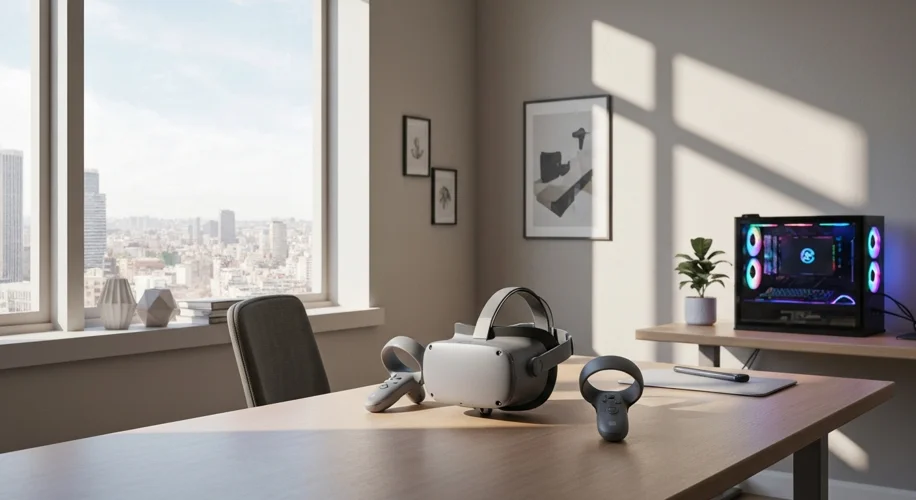Alright everyone, let’s dive into the current VR headset scene because, honestly, keeping up with all the new releases can feel like a full-time job. As of August 2025, Meta’s Quest line is still dominating the conversation, but there’s a lot more to consider if you’re looking to jump into virtual or mixed reality.
First up, the heavy hitter: the Meta Quest 3. This headset is a solid all-rounder. Its standout feature for me is the color passthrough for mixed reality (MR). It’s not perfect, but it’s a huge step up, letting you see your real surroundings blended with virtual elements. For standalone gaming and experiences, it’s fantastic. The processing power is good enough to run most apps without a hitch. If you’re also thinking about PC VR, the Quest 3 handles that too, either wirelessly via Air Link or with a USB-C cable (like Meta’s Link Cable or a third-party option). Just remember, for PC VR, your computer’s specs are key. We’re talking a decent graphics card (think NVIDIA RTX 3060 or higher, or AMD RX 6700 XT or better) and a solid CPU.
Now, what about the rumored Quest 3S? While Meta hasn’t officially announced it, the buzz suggests it might be a more budget-friendly option. Specs are still speculative, but the hope is it retains much of the Quest 3’s core tech but perhaps with compromises on the display resolution or maybe a simpler MR passthrough. If it lands at a significantly lower price point, it could be a great entry-level headset for those who are curious about VR but don’t want to break the bank. Keep an eye out for official announcements on this one.
Beyond Meta, there are other players. The PlayStation VR2 (PSVR2) is still a strong contender if you’re deep in the PlayStation ecosystem. It offers excellent eye-tracking and OLED displays, but it’s tied to the PS5, limiting its versatility. Pico 4 Ultra is another option, often praised for its comfort and display, though app availability can sometimes be a consideration compared to Meta’s platform.
For the true enthusiasts, headsets like the Bigscreen Beyond 2 and Pimax Crystal Light push the boundaries further. The Bigscreen Beyond is all about a custom, micro-OLED fit for ultimate comfort and clarity, but it’s PC-only and requires significant setup. Pimax often focuses on ultra-wide fields of view and high resolutions, again, typically geared towards PC VR power users willing to invest more.
Connecting to a PC is pretty straightforward these days. Wi-Fi 6 or 6E is ideal for wireless streaming (Air Link for Quest). A good quality USB-C cable can offer a more stable, lower-latency connection, especially if your Wi-Fi isn’t top-notch. Make sure your PC is running up-to-date drivers, especially for your graphics card.
So, whether you’re a casual user looking for some mixed reality fun, a dedicated gamer wanting the best PC VR experience, or someone on a tighter budget, there’s likely a headset out there for you. The Quest 3 is the current sweet spot for many, but understanding what you need it for will help you make the best choice. Keep an eye on the Quest 3S rumors, and don’t forget the other fantastic options available!

